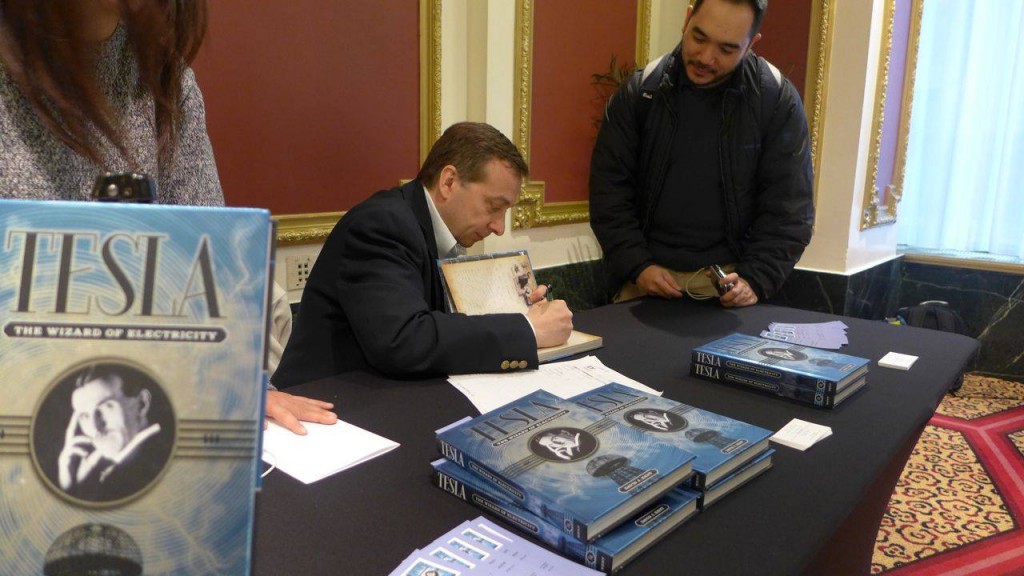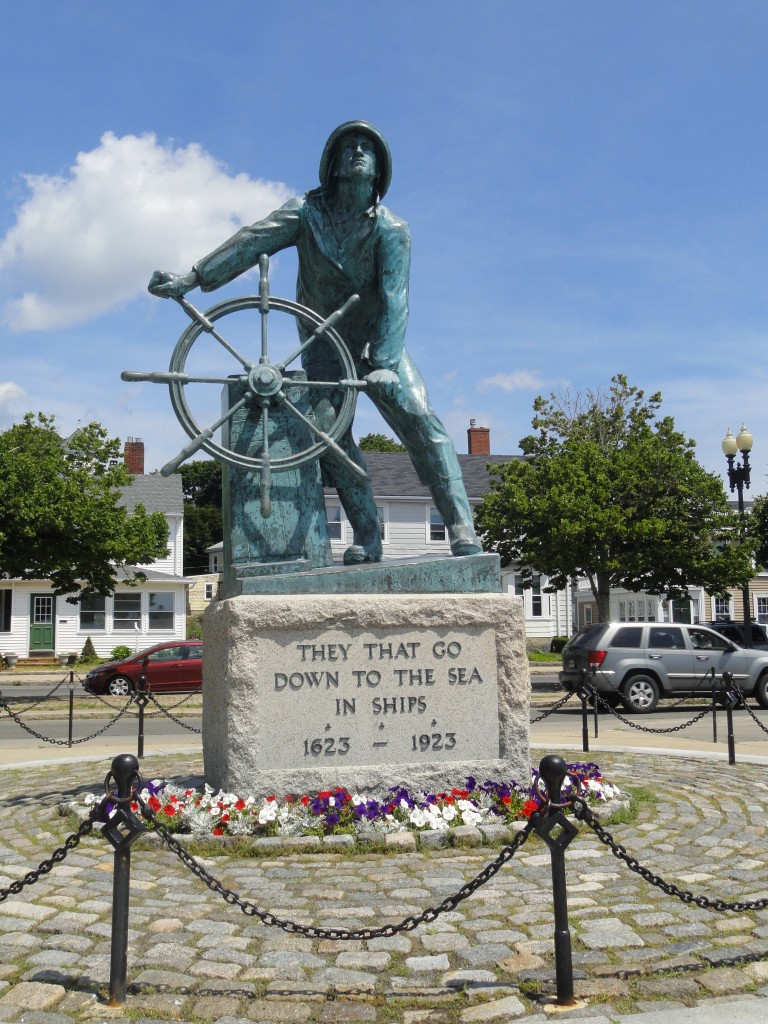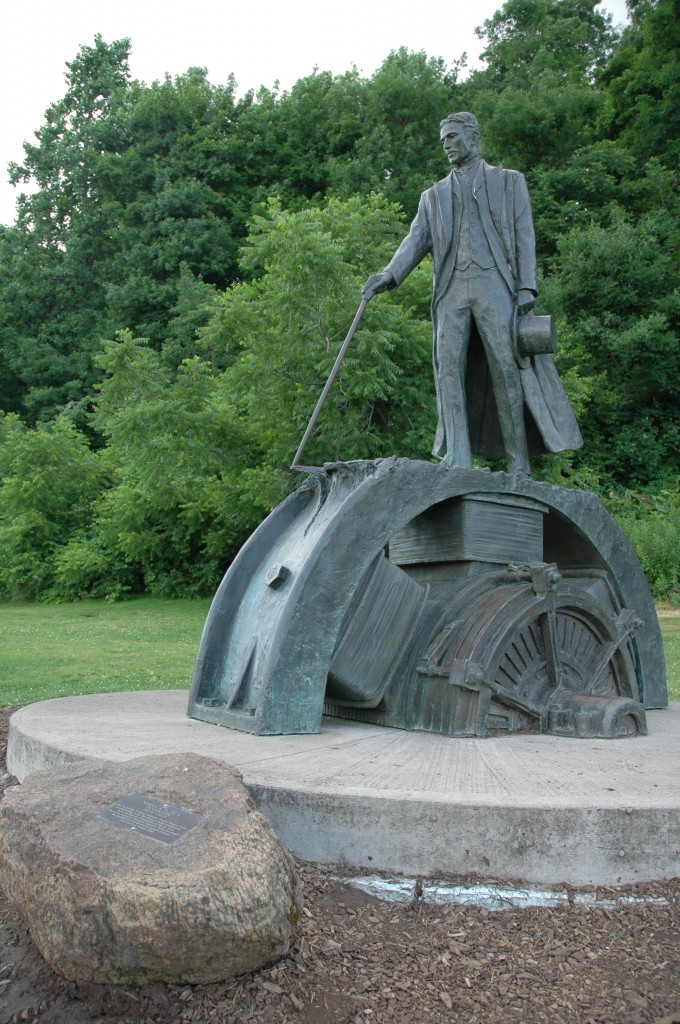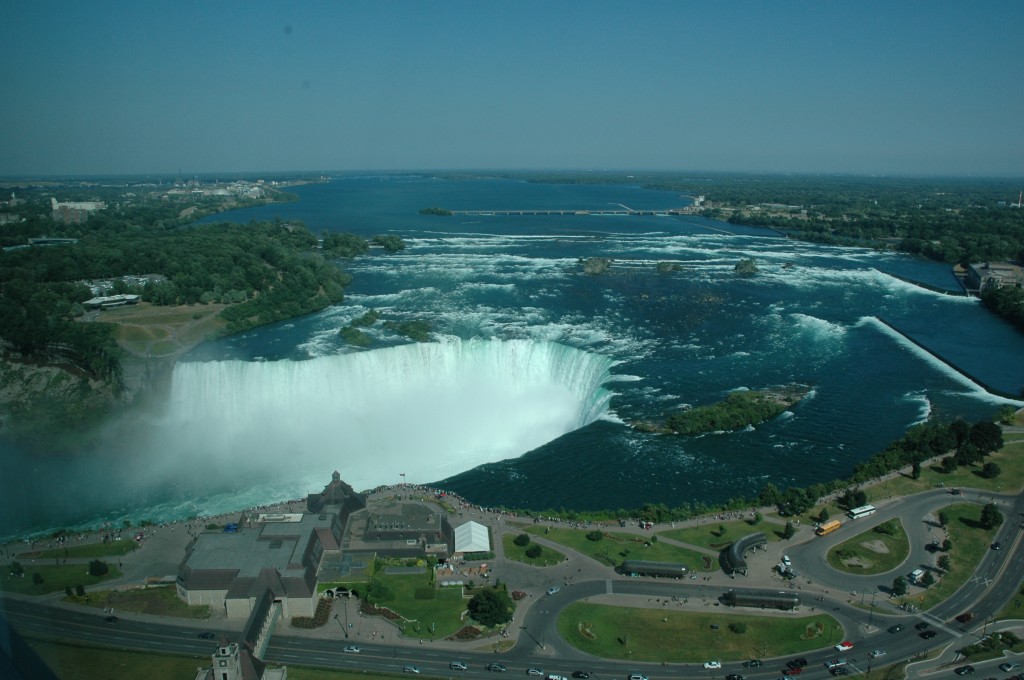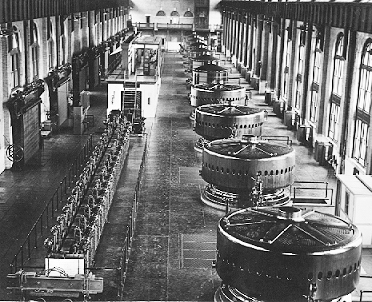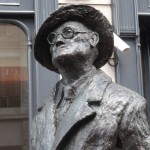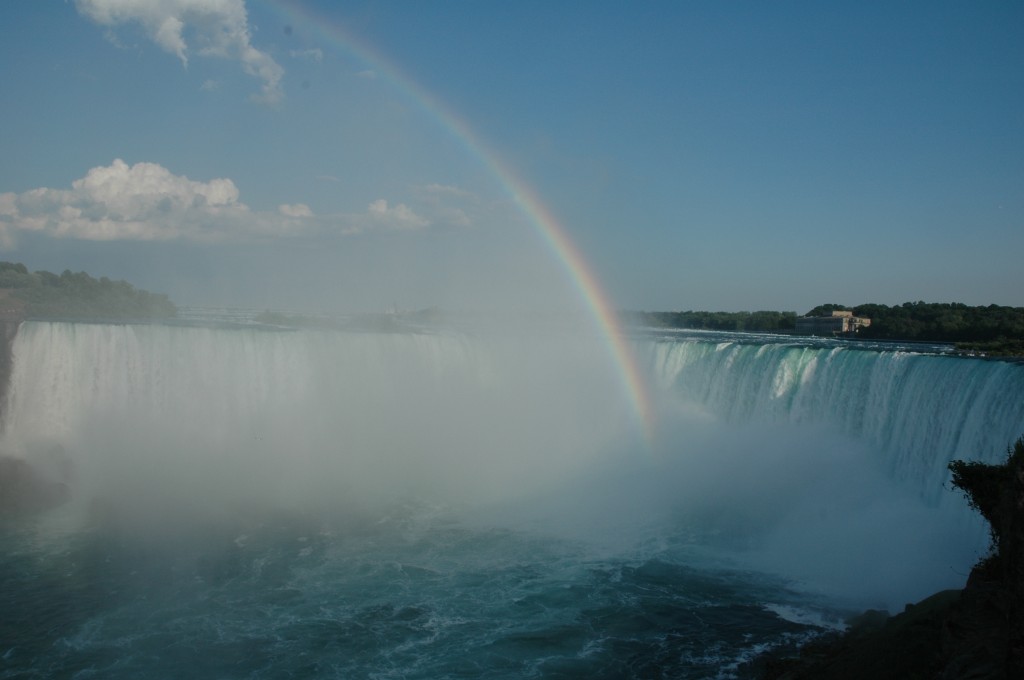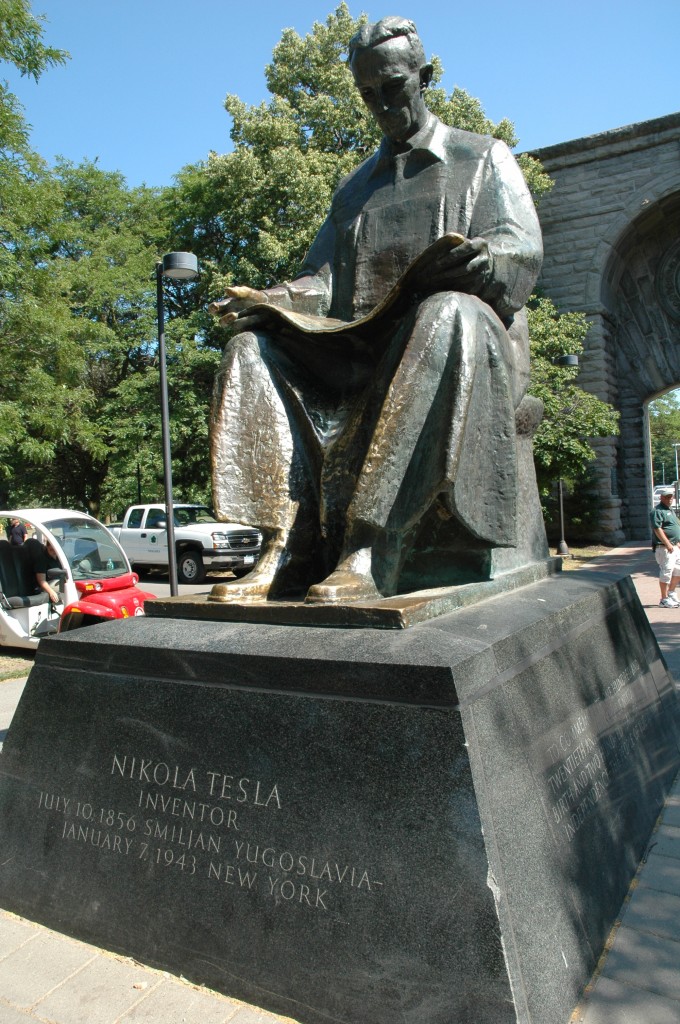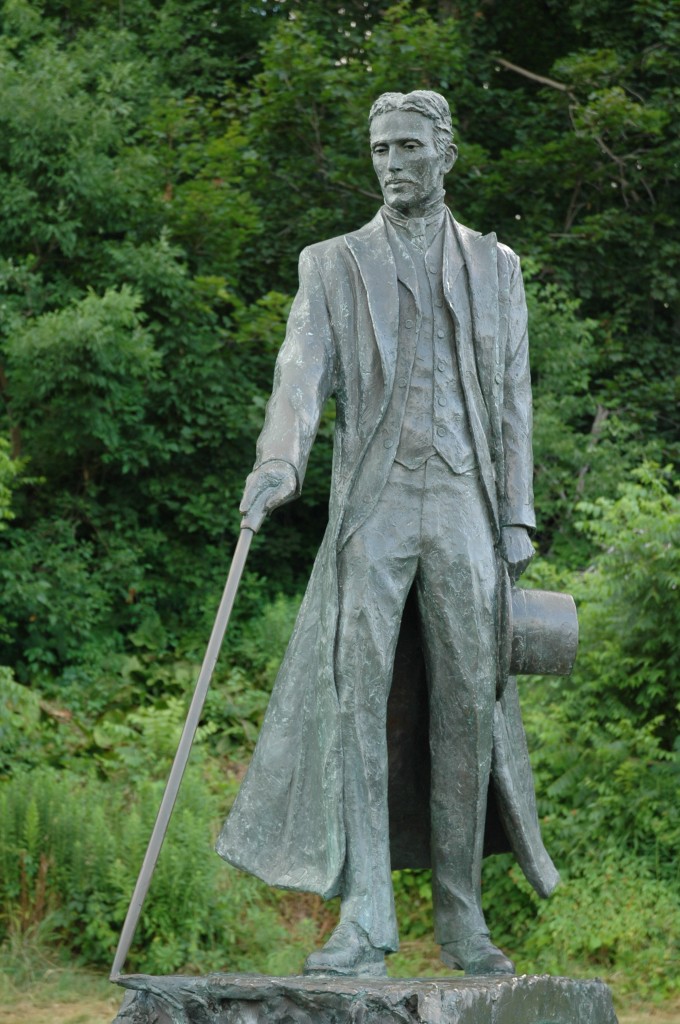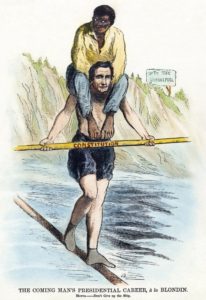 [This is Part 2. Read Part 1 here.]
[This is Part 2. Read Part 1 here.]
Lincoln did appreciate the allure of the Falls. The very first impression in his fragment is “Niagara-Falls! By what mysterious power is it that millions and millions, are drawn from all parts of the world, to gaze upon Niagara Falls?” Kaplan, in his book “Biography of a Writer,” notes that the simplicity of the opening exclamatory “establishes the hugeness of his subject.” He further notes that “the exclamation point is both redundant and expressive,” signs of someone who appreciates the magnificence of the Falls. Lincoln’s sensitivity to the Falls’ is further shown in his fragment as he recognizes “its power to excite reflection, and emotion, is its great charm.” Therefore, it appears Lincoln did appreciate the beauty of the Falls, as well as the power of its attraction to people drawn from far and wide.
That said, Herndon is right in his observation that Lincoln had a problem-solver mentality. Seeing the Falls in person is an overwhelming experience. Yes, the beauty, the grandeur, the roar of the water falling into the misty gorge. But the astute Lincoln would also ponder where all that water comes from, and why does it not drain the lake? A systematic thinker would be curious about the larger technical issues of the falls, in addition to the beauty.
As Lincoln whiled away the long days and nights on the Globe as it worked its way through the Great Lakes, his mind was clearly on a future lecture on what he had seen at Niagara. Indeed, while he never completed his Niagara fragment, he did make mention of Niagara Falls in a draft of his later lecture on Discoveries and Inventions, before striking it out. In his analytical thinking, Lincoln did not believe there was any great mystery of the physics behind the falls itself.
“If the water moving onward in a great river, reaches a point where there is a perpendicular jog, of a hundred feet in descent, in the bottom of the river, Lincoln noted dryly, “it is plain the water will have a violent and continuous plunge at that point.” Having dropped off the edge, “thus plunging, will foam, and roar, and send up a mist.” If the sun is shining, it is only logical that “there will be perpetual rain-bows.”
Others may have been satisfied with the “mere physical” of Niagara Falls, or like Herndon, enthralled by the beauty without thinking too much about the science, but Lincoln’s analytical mind took this much further. He thought of the phenomenon from multiple viewpoints, a characteristic that allowed him to make decisions with both deeper and broader understanding than most people. Examining his fragment gives us further insight into that mind.
“The geologist will demonstrate,” Lincoln writes, as he envisioned how the vast movement of water wears away the rock as it plunges over the Falls, not just of the bottom, but more importantly, from the top. He speculated that that geologist would “ascertain how fast it is wearing now,” and determine from this that the Earth was “at least fourteen thousand years old.” This estimate is close to the time of the last Ice Age, which is when the Falls were formed.
Lincoln also showed he had some grasp of natural hydrology cycles, speculating that a natural philosopher “of a slightly different turn,” would look at Niagara as the pouring of “all the surplus water which rains down on two or three hundred thousand square miles of the earth’s surface.” He was remarkably accurate in this estimate; today’s scientists say the Niagara River and Lake Erie combined drain a watershed of 265,000 square miles. This same natural philosopher, according to Lincoln, might estimate “that five hundred thousand [to]ns of water, falls with its full weight, a distance of a hundred feet each minute—thus exerting a force equal to the lifting of the same weight, through the same space, in the same time.”
This is rather scientific stuff for a frontier lawyer with little formal education. Lincoln is writing this as he made his way back by steamer home from the East, so he would seem to be recalling all this from memory. But he did not stop there. Lincoln elaborates on this hydrology cycle by pulling in the role of the sun, which through the process of evaporation the water is “constantly lifted up.” He contemplates that if enough water is raised from the watershed to feed the Falls, this natural philosopher would be “overwhelmed in the contemplation of the vast power the sun is constantly exerting in quiet, noiseless operation of lifting water up to be rained down again.” This sounds like a science geek talking, not a future president. He would incorporate this view of solar power (as well as energy from the wind) in his later Discoveries and Inventions lecture.
“But still there is more.”
Lincoln was not finished. In the last paragraph of his Niagara fragment he turns philosophical. He suggests that Niagara Falls “calls up the indefinite past,” and “when Columbus first sought this continent—when Christ suffered on the cross—when Moses led Israel through the Red Sea—nay, even, when Adam first came from the hand of his Maker—then as now, Niagara was roaring here.” Lincoln also shows some familiarity with paleontology, noting that the “Mammoth and Mastodon,” whose existence is demonstrated by “fragments of their monstrous bones,” also “gazed on Niagara.” This section shows that Lincoln could be as philosophical as he could scientific.
Lincoln thus shows he is multidimensional in his thinking. While Herndon was enthralled by the beauty and power of the Falls, Lincoln saw the Falls as both beautiful and a learning experience. He contemplated not only its charm and power to excite emotion, but also its hydrology, geology, and natural science aspects. Keeping in mind that the Falls we see today are significantly lessened since the 1895 diversion of water into tunnels feeding the new hydroelectric plant, the site Lincoln saw must have been awe-inspiring indeed.
With Herndon notoriously lacking of a sense of humor, we also have to wonder whether Lincoln was pulling Herndon’s leg a bit with his initial reply to Herndon’s “deepest impression” query about the Falls. But clearly the events immediately following his brief visit were important in securing the technical aspects of the Falls in Lincoln’s already scientifically-primed mind, his “fascination from an early age with the human, the mechanical, and the natural, how things work in the world.”
Lincoln would once again get a chance to view the magnificence of the Falls. During a July 1857 trip to New York, ostensibly to collect an outstanding $5000 fee for a railroad case, Mary Lincoln notes that some portion of the trip was “spent most pleasantly traveling east,” with stops in “Niagara, Canada, and New York.” It is highly likely, as husband and wife gazed romantically upon the majesty of Niagara Falls, Lincoln was secretly doing a little math in his head.
[The above is adapted from my article by the same title in The Lincolnian, a publication of the Lincoln Group of the District of Columbia. If you missed Part 1 you can read it here.]
David J. Kent is an avid traveler, scientist, and Abraham Lincoln historian. He is the author of Lincoln: The Man Who Saved America, Tesla: The Wizard of Electricity and Edison: The Inventor of the Modern World as well as two specialty e-books: Nikola Tesla: Renewable Energy Ahead of Its Time and Abraham Lincoln and Nikola Tesla: Connected by Fate.
Check out my Goodreads author page. While you’re at it, “Like” my Facebook author page for more updates!



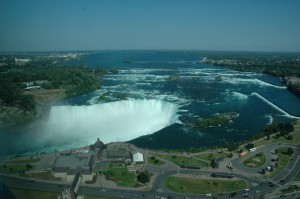 Abraham Lincoln was fascinated by science and technology. In his personal life he sought to improve his knowledge, studying not only the law but Euclid geometry, astronomy, and various forms of technology-driven improvement. As President he was often the first man inventors (and hucksters) would seek out with their new devices. He even had a patent, the first and only President ever to receive one. But perhaps the best way to highlight Lincoln’s way of thinking would be to examine the incredulous response to a question from his law partner, William Herndon.
Abraham Lincoln was fascinated by science and technology. In his personal life he sought to improve his knowledge, studying not only the law but Euclid geometry, astronomy, and various forms of technology-driven improvement. As President he was often the first man inventors (and hucksters) would seek out with their new devices. He even had a patent, the first and only President ever to receive one. But perhaps the best way to highlight Lincoln’s way of thinking would be to examine the incredulous response to a question from his law partner, William Herndon.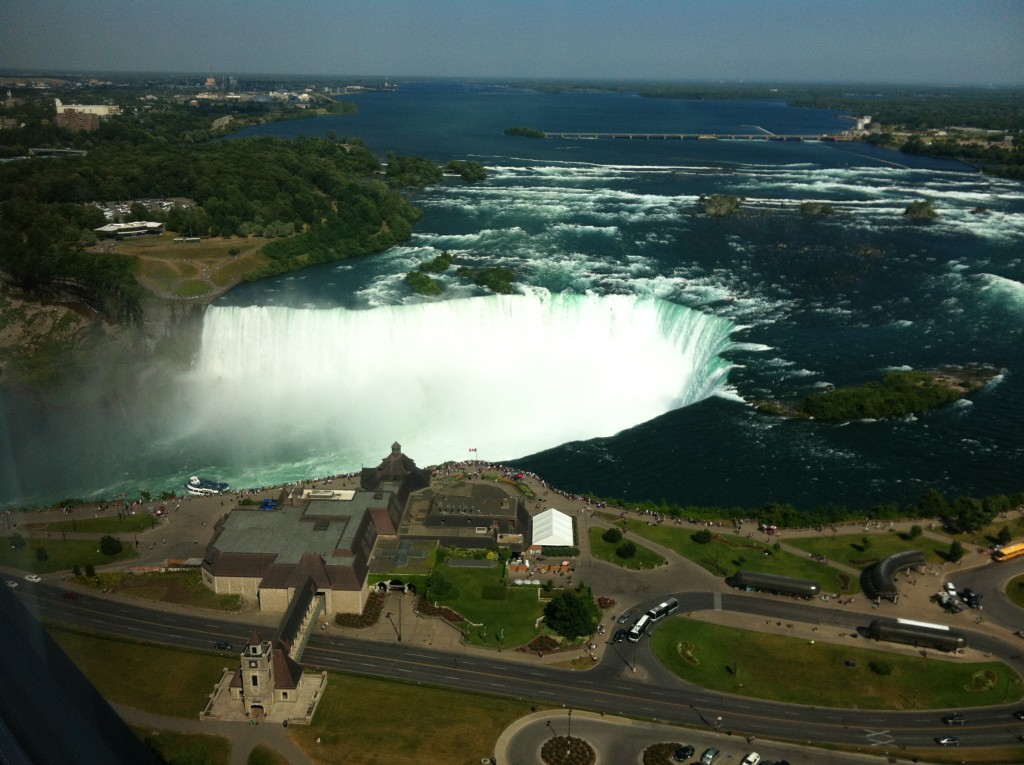
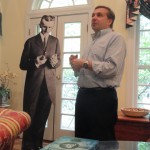 Nikola Tesla is on his way to Ipswich. It’s appropriate that Tesla makes a stop in northeastern Massachusetts as he once was a business colleague of John Hays Hammond, Jr., owner and builder of the famous
Nikola Tesla is on his way to Ipswich. It’s appropriate that Tesla makes a stop in northeastern Massachusetts as he once was a business colleague of John Hays Hammond, Jr., owner and builder of the famous 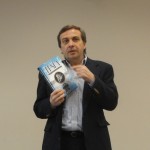 Nikola Tesla would be 158 years old on July 10, 2014 if he were still alive. In a way, Tesla has had a rebirth in recent years: Wardenclyffe is being turned into a museum and science center; Tesla has become a pop culture icon (and a car company); and books about him are selling off the shelves. This birthday has special meaning both for Tesla and for me. With that in mind here is an update of some key events over the next month or so.
Nikola Tesla would be 158 years old on July 10, 2014 if he were still alive. In a way, Tesla has had a rebirth in recent years: Wardenclyffe is being turned into a museum and science center; Tesla has become a pop culture icon (and a car company); and books about him are selling off the shelves. This birthday has special meaning both for Tesla and for me. With that in mind here is an update of some key events over the next month or so.